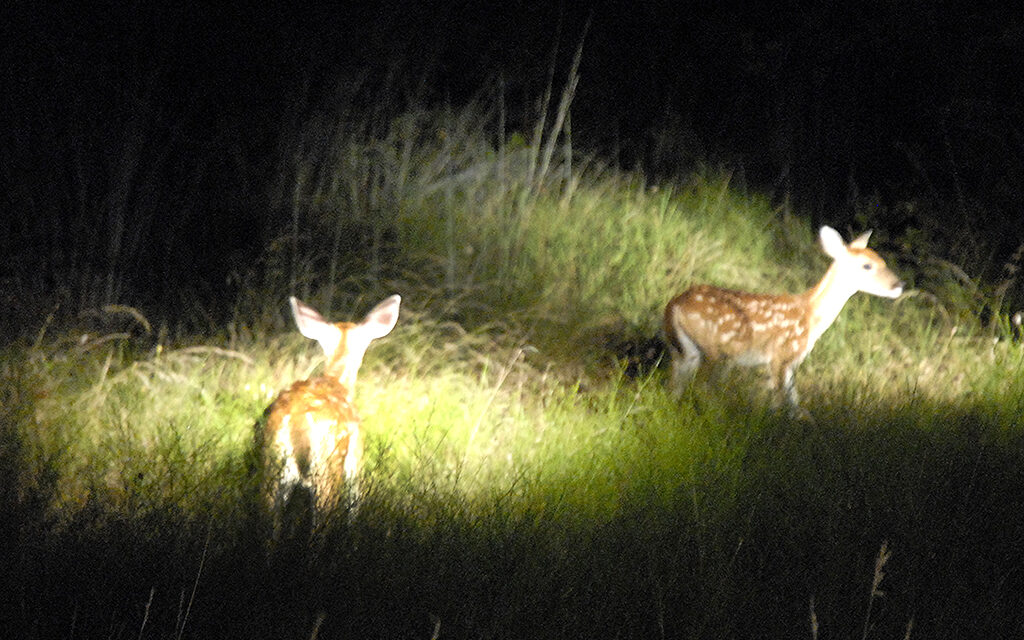by John Jefferson
In the 1950s, many ranchers answered that suggestion with a resounding boots-on-the-table “NO!” Expletives often accompanied comments.
That era was called “The Doe Wars.” Public hearings on proposed hunting regulations required armed game wardens accompanying TPWD biologists.
That began to change when the phrase “Deer Management” appeared in conversations and writings. One of the first published works on it was “Game Management” by Aldo Leopold, published in 1933. It took Texans a while to recognize it.
Hunters have now adopted taking doe deer as part of hunters’ bag limits. Whenever questions of “when” and “how many” were brought up in conservation, though, some still decline participating.
I realized that when I managed a deer lease with TPWD’s recommendations in Lampasas County. My suggestions received soft approval– but led to non-application.
After a year of several members still not taking a doe along with their one legal buck, I announced possibly taking additional Bow Hunters daily during the early archery season. I listened to the hunters’ resistance and agreed that IF their doe harvest increased in the upcoming season, I would hold off the bringing in day- doe hunters.
The day-hunter threat somewhat increased doe kills, but not enough. The only ones to take two does were my wife and me. TPWD allowed additional does in the bag for Wildlife Co-op members, and my wife legally took five that season. We gave away two boned- does to needy families and ate really well ourselves on the rest!
Other leases had similar problems. Shooting a doe before taking a buck was not a popular rule although it meant conserving the most nourishing vegetation a little longer into deer season. Hunters had plenty of excuses about why that failed. The next year, I made shooting two does mandatory. Still only limited compliance.
Bob Cook, former TPWD Executive Director and its Wildlife Director before that — once told me adequate deer nutrition depended on “Numbers, Numbers, and Numbers!” Last week, I mentioned that Texas hunters would be doing aerial deer surveys and told of the pleasures and perils of helicopter surveys. I should have also said they were costly, and permits are required.
There are other ways like the Conservation Option of Managed Lands Deer Program (MLDPs). “Wildlife Co-ops” have been replaced by new regulations. Check ‘em out. Spotlight surveys told us a lot. It may be too late to join this year, however.
My friend, Lindsay Thomas Jr., Communications Director for National Deer Association, in Georgia — the former Quality Deer Association –still gets those “When” and “How Many” questions. He shared his answers and thoughts. (See photo caption.)
Foremost, too many does mean more mouths for the food supply, causing all deer to get shorted – especially the outnumbered bucks. And every year, hunters also kill more bucks than does, further increasing doe-overpopulation. Taking older does helps. Google Thomas’ meaningful article for more discussion.
And strive for buck-to- doe ratios of one to two, instead of one to SIX! It’ll help!
JJ




